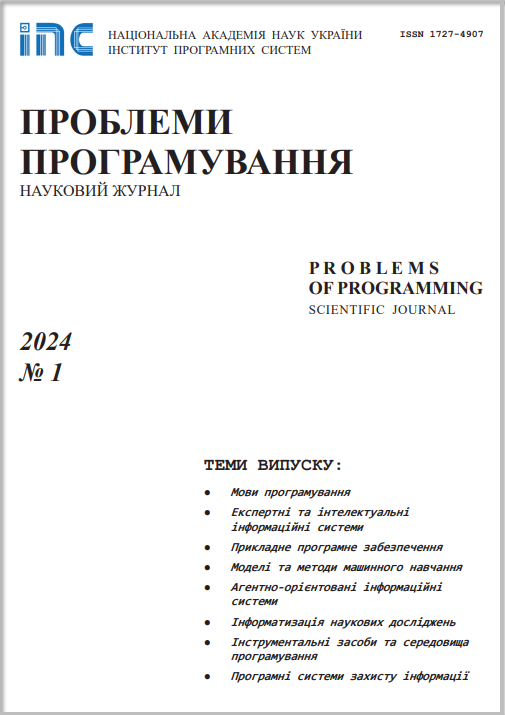On the peculiarities of using sparse matrices in problems of mathematical modeling
Abstract
Mathematical modeling and the related computer experiment are now one of the main means of studying objects, processes and phenomena of various nature: in science, engineering, economics, society, etc. A significant improvement in the quality of mathematical modeling in many areas of science and engineering is possible only with the use of fundamentally new three-dimensional models, the transition from computer simulation of individual components and assemblies to the calculation and optimization of the product as a whole. It is obvious that the consideration of problems in such a formulation leads to discrete mathematical models of super-large sizes. Existing supercomputers of different parallel architectures make it possible to efficiently solve such problems. However, the time for solving problems on parallel computers consists of the time of the actual solution and the time of performing additional operations, that are necessary for the exchange of information between computing devices, that is overhead costs. This is especially true for problems of linear algebra with different structures of sparse matrices of large volumes, that arise in the mathematical modeling of processes. Sparse matrix compaction schemes, decomposition of data arrays between processors are one of the main factors for the effective solution of these problems on parallel computers. The paper considers efficient methods for processing sparse matrices of arbitrary structure for the purpose of effective mathematical modeling of structural strength problems on parallel computers. Various methods of regularization and decomposition of sparse matrices of arbitrary structure, efficient data storage schemes, technology for studying the conditionality of a matrix with approximate data on a computer are proposed. This way of using sparse matrices in mathematical modeling ensures more efficient use of computing resources and reliability of computer results. Problems of mathematical modeling are presented, where the considered methods of processing sparse matrices were effectively applied.
Prombles in programming 2022; 3-4: 240-248
Keywords
Full Text:
PDFReferences
Timoshenko S.P., Goodier J. (1975) Theory of elasticity. M.: Nauka. 575 p. (in Russian)
Gorodetsky A.S., Evzerov I.D. (2007) Computer models of structures. K: FACT. 394 p. (in Russian)
Slobodyan Ya.E. (2009) Supercomputer technology for modeling the life cycle of especially complex technical objects. Cybernetics and Systems Analysis, Vol. 45, N. 6. P. 959-965. CrossRef
Baranov A.Yu., Popov A.B., Slobodyan Y.E., Khimich A.N. (2017) Mathematical Modeling of Building Constructions Using Hybrid Computing Systems. Journal of Automation and Information Sciences. Vol. 50 (7). P 18-32. CrossRef
G. Strang and J. Fix An (1973) Analysis of the Finite Element Method. Prentice-Hall, Englewood Cliffs, NJ, 306 p.
Molchanov I.N., Nikolenko L.D. (1984) Fundamentals of the finite element method. Kiev: Naukova dumka. 267 p. (in Russian)
Khimich A.N., Dekret V.A., Popov A.V., Chistyakov A.V. (2018) Numerical Study of the Stability of Composite Materials on Computers of Hybrid Architecture. Journal of Automation and Information Sciences. Vol. 50. N. 7. P. 7-24. CrossRef
A.N. Khimich, I.N. Molchanov, A.V. Popov, Т.V. Chistyakova, M.F. Yakovlev. (2007) Parallel algorithms for solving problems in computational mathematics. Kiev: Naukova dumka. 248 p. (in Russian)
Sergienko I.V., Khimich O.M. (2019) Mathematical modeling: From small to exaflops. Bulletin of the National Academy of Sciences of Ukraine. N 8. P. 37-50. (in Russian) CrossRef
Pissanetzky S. (1984) Sparse Matrix Technology. London: Academic Press. 321 p. CrossRef
Gene H. Golub, Charlee F. Van Lone. (2013) Matrix calculations. JHUPress. 756 p.
George, A., and Liu, J. W.-H. (1981) Computer Solution of Large Sparse Positive Definite Systems. Prentice-Hall, Englewood Cliffs, NJ, USA. 324 р.
Saad Y . (2000) Iterative Methods for Sparse Linear Systems. PWS Publishing Company. 448 p.
Molchanov I.N., Khimich A.N., Popov A.V. (2005) Efficient Implementation of Computational Algorithms on MIMD Computers. Artificial Intel- ligence. N. 3. P. 175-184. (in Russian)
Popov O.V. (2013) About parallel algorithms for factorization of sparsed ed matrices. Computer Mathematics: Collection of scientific papers. N. 2. P. 115-124. (in Ukrainian)
Khimich О.М., Chistjakova T.V., Sidoruk V.A., Ershov P.S. (2021) Adaptive computer technologies for solving problems of computational and applied mathematics. Cybernetics and Systems Analysis. Vol. 57. N 6, P. 990-997. https://doi.org/10.1007/s10559-021-00424-z. CrossRef
LIRA-SAPR [Online] Available from: http://www.liraland.ua. [Accessed: 1 June 2022]
Programs for calculation and design of structures [Online] Available from: http://www.lira.com.ua. [Accessed: 1 June 2022]
Supercomputer complex SKIT. [Online] Available from: http://icybcluster.org.ua/ [Accessed: 1 June 2022]
Khimich A.N., Popov A.V., Chistyakov A.V. (2017) Hybrid Algorithms for Solving the Algebraic Eigenvalue Problem with Sparse Matrices. Cyber- netics and Systems Analysis. N 6. P. 132-146. CrossRef
Khimich A.N., Popov A.V., Chistyakov O.V., Sidoruk V.A. (2020) A Parallel Algorithm for Solving a Partial Eigenvalue Problem for Block- Diagonal Bordered Matrices. Cybernetics and Systems Analisys. V. 53. N. 6. P. 913-923. CrossRef
DOI: https://doi.org/10.15407/pp2022.03-04.240
Refbacks
- There are currently no refbacks.


